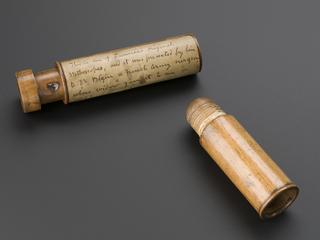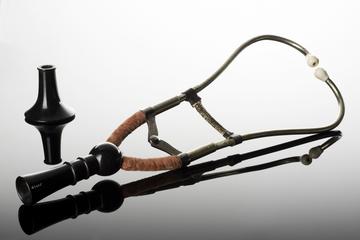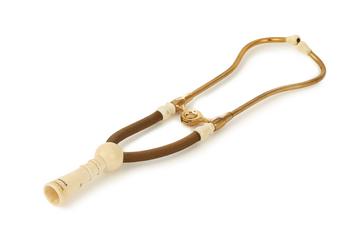




Fahrenheit clinical thermometer, Currie's type, 1800-1810, cased
Scottish physician James Currie (1756-1805) pioneered the clinical thermometer. This early example is one of a type he devised. The clinical thermometer differs from an ordinary thermometer. It measures only over a limited temperature range relating to body temperatures.
Such instruments were used in medicine for some time before 1850. However, it was only then they began being used as a precise means to diagnose disease. They were also used to predict a disease’s course through recognising the different temperature patterns of specific diseases. This example has a Fahrenheit scale. It is thought to have been made in England.
Details
- Category:
- Clinical Diagnosis
- Collection:
- Sir Henry Wellcome's Museum Collection
- Object Number:
- A600078
- Materials:
- glass, mercury, ivory, leatherette, fabric, cotton (textile) and complete
- Measurements:
-
overall: 193 mm x 37 mm, 8 mm, 0.028 kg
- type:
- thermometer




